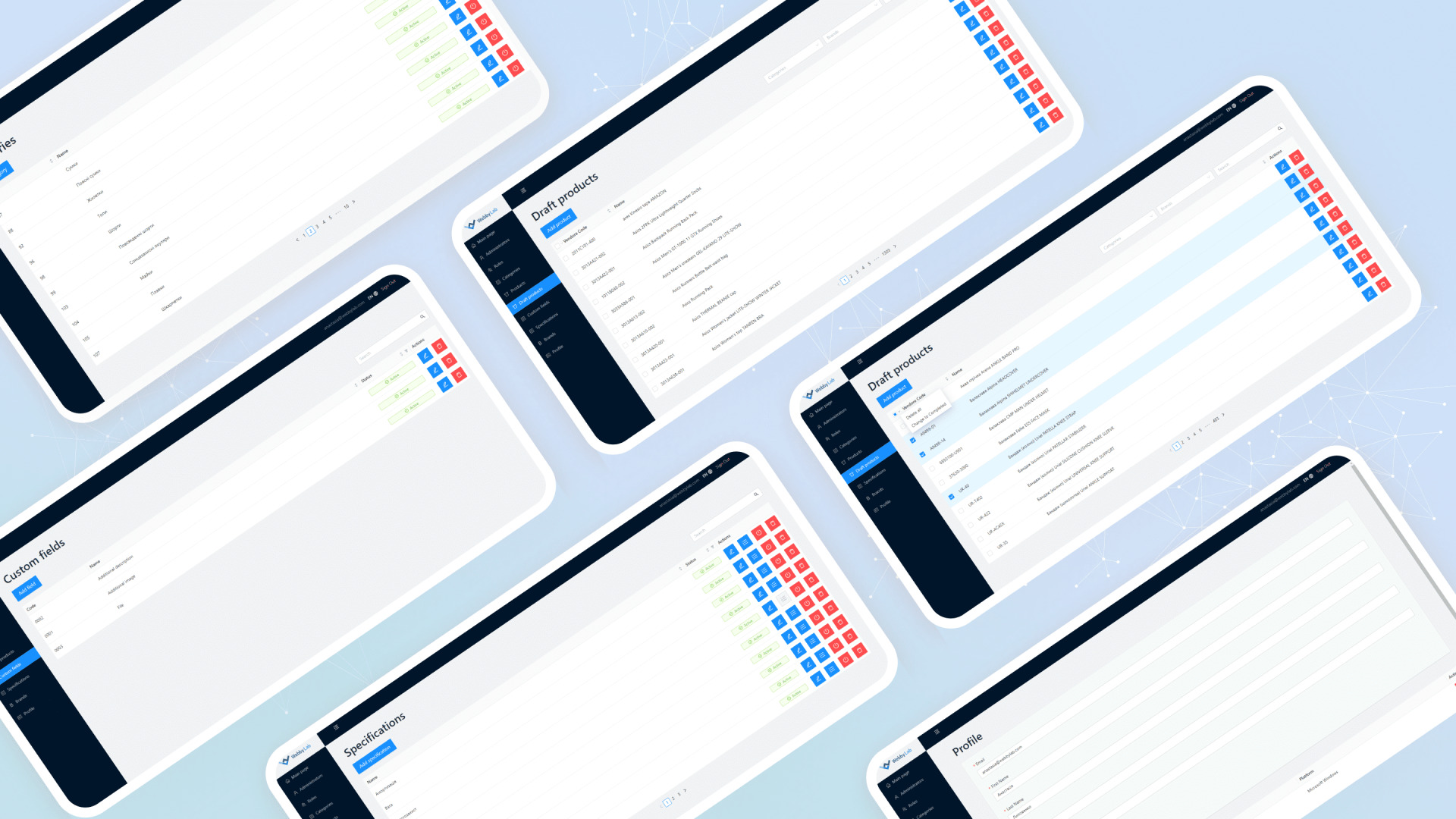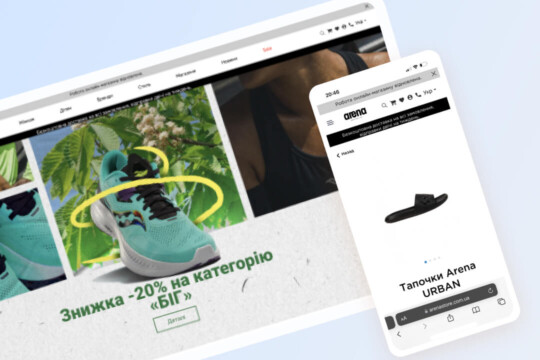The brief
Product information management platform for brands, retailers and manufacturers with intuitive user interface.

Challenge
The main task was to develop the system that would be a single source of truth which contains all product information and helps to control, manage, enrich and distribute it to sales and marketing channels. Based on the analysis, we understood that the perfect solution should:
- have an intuitively understandable interface;
- unified source for all product information – characters, descriptions, images, and meta information;
- protect your data from human error;
- be easily integrated with any eCommerce application.
Solution
The developed highly configurable product allows to manage product content in one place across all connected channels and apps.


Software architecture model

Key features
PIM is able to manage: products, images, brands, specifications and values, categories, custom fields, users, user roles, etc.
It allows to:
- Create and edit characters and values;
- Add and remove images;
- Manage product information;
- Bulk edit products;
- View and restore product versions;
- Export product information to multiple export channels;
- Import product data;
- Diverse content for each export channel;
- Activate and deactivate brands and categories;
- Create custom fields for product content;
- Create custom roles for users.

Results
We have created a scalable solution that is:
- resilient to a large amount of data;
- intuitively understandable;
- easily integrated.
Implementation
WebbyLab’s PIM system is integrated with our customers’ four eCommerce applications based on OpenCart:
cmpsport.com.ua
runlab.com.ua
saucony.kiev.ua
arenastore.com.ua
Prior to integration, customer struggled with product information inconsistencies and were on the lookout for systems that would meet their demands. There were a lot of SKUs that were presented on the several export channels, but the information on each for the same SKU was different. It became a major problem that interfered with scaling up. Moreover, the database contains more than 13K products that are hard to control and standardize. The best solution, in this case, was to start using PIM.
The first task was to gather all product information in one JSON file. And the most important and puzzling thing was to get rid of duplicates and unify product specifications. By developing the script we reached the goal and proceeded to the next phase. Secondly, due to the differences between formats, entities, and quantity of product fields, we agreed on the necessity to develop a plugin that would be integrated with each eCommerce application and help customers to configure and control synchronization among services. Then, we connected PIM to the database to automatically create new products and update information about existing products. To sum up, PIM organized, unified product data, and decreased the time and cost needed to launch a new SKU.

